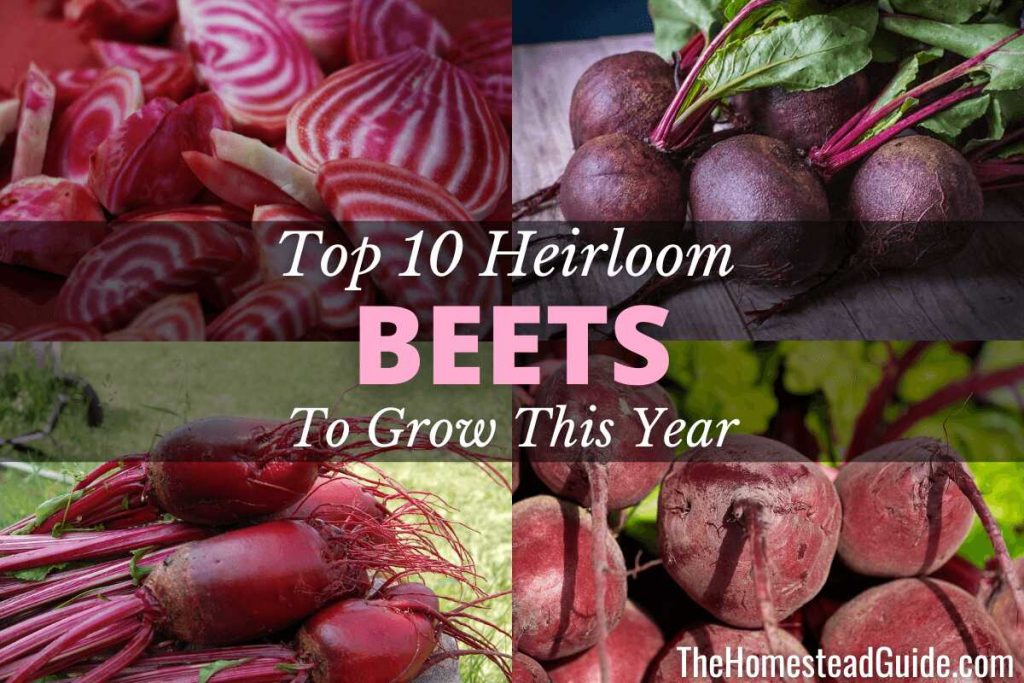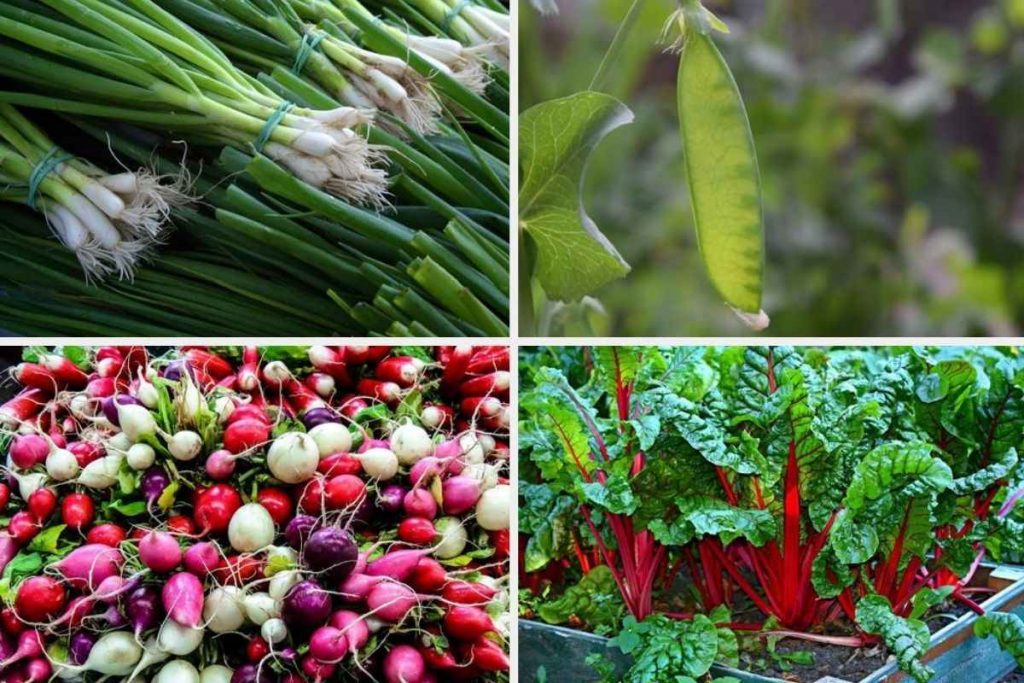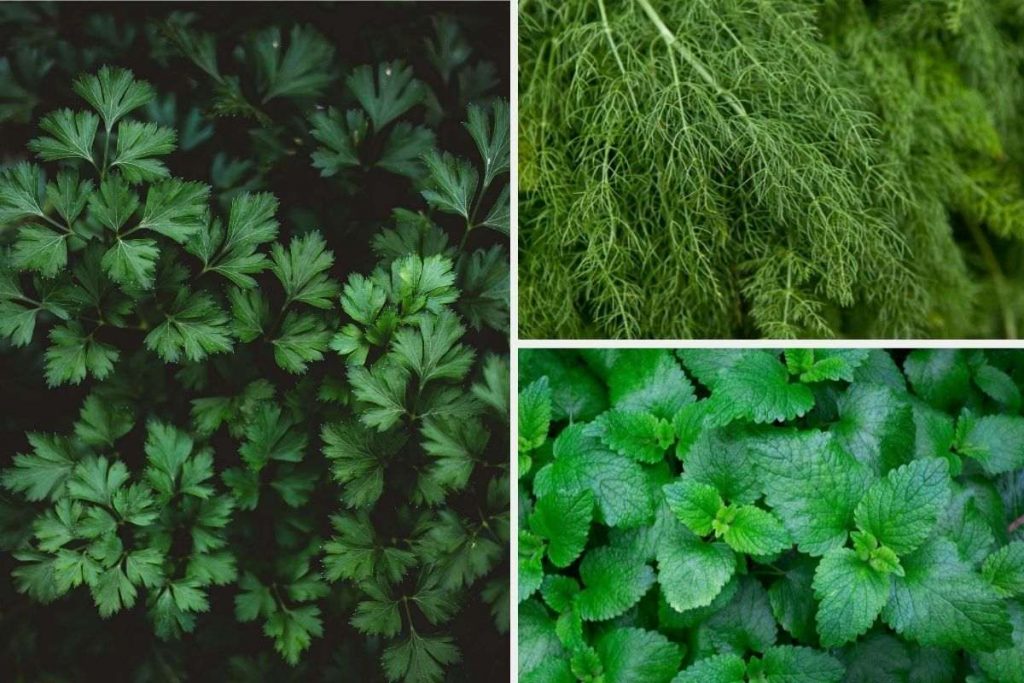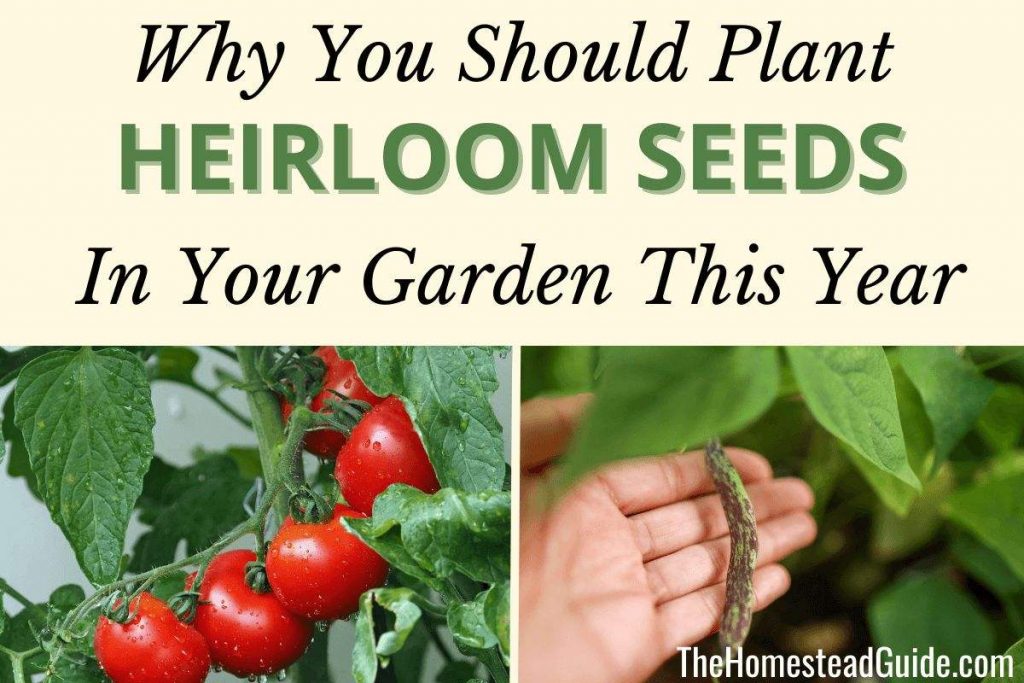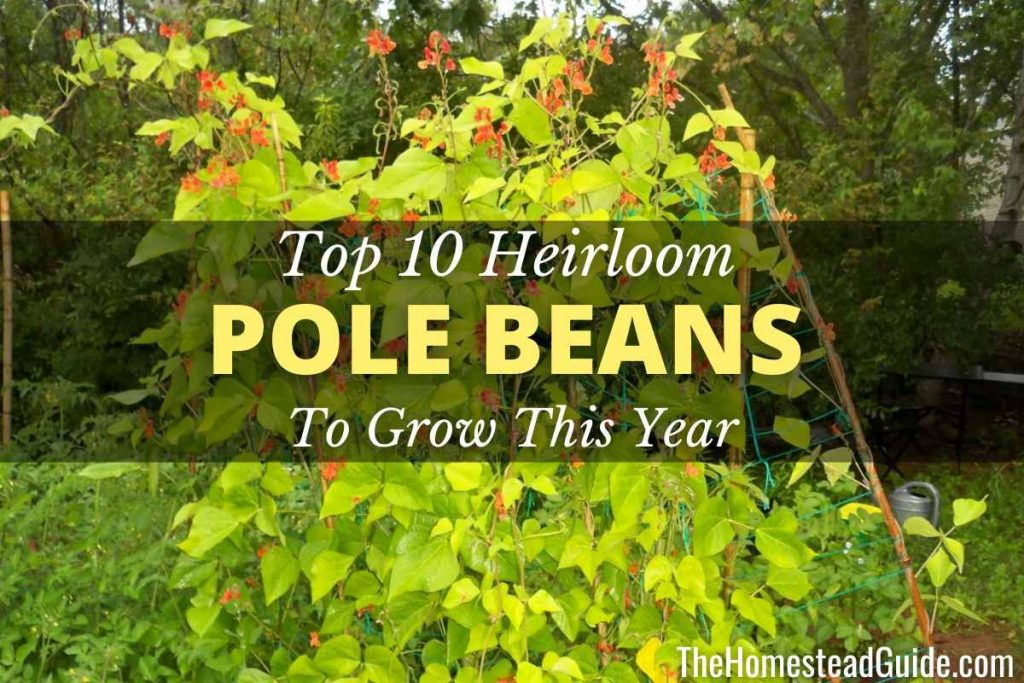If you ask me, beets are an underrated vegetable. Everyone seems to hate them, but that’s probably because they are used to the bland, mushy, canned ones you get at the grocery store. I personally love beets! There are so many different varieties and they have many different flavors, although they all have that earthy flavor profile that can be a bit of an acquired taste.
What’s not to love, though? They are super nutritious, store well and are super versatile – you can pickle them, slice them thin or grate into salads, use them in soups, make wine from them and so many more things! Plus, you can enjoy the greens as well as the roots. You can even grow them for your chickens!
I always prefer growing heirloom varieties in my garden. I love that connection to the old world – the flavors just can’t be beat, and it makes me feel like I am doing my part to preserve the genetics of these varieties and provide a source of food for me and my family.
In this post, I go over my favorite varieties of heirloom beets. Check it out!
Tips on How to Grow Heirloom Beets from Seed
- Beets are a cool weather crop. They do best when planted in early spring or late summer, just like peas. They’re great for those of us in colder climates!
- They do like rich, fertile soil and full sun, but there are some varieties like Ruby Queen (#9 in my post) that do well and even thrive in shade and poorer soil conditions.
- When you get your seeds, they are usually in the form of a little ball that contains two to four seeds. Being a root vegetable, they do best when sown directly where you plan to grow them, though beets in particular can tolerate being transplanted when still very young. You’ll need to thin them once they reach about 4-5 inches tall, and you can eat the microgreens after you thin them. It’s best to cut them rather than pull them out so you don’t disturb the other roots.
- Depending on the size of your variety, you’ll need to thin them out to 4-6 inches apart or more if you are growing very large varieties.
- Keep them separate from Swiss chard and spinach, as they are susceptible to the same pests and diseases.
For more tips on growing heirloom beets from seed, check out this amazing resource from The Old Farmer’s Almanac!
1. Detroit Dark Red
First up is the classic Detroit Dark Red variety, which is one of the most popular beets to grow amongst gardeners and one of the best heirloom beets out there. These beets were introduced in 1892 and have that classic round, red, uniform look. They are a great all-purpose beet, as you can eat the greens just like you would spinach or Swiss chard, and the root is nice and tender. If you’re looking to grow your own heirloom beets that resemble what you’d find at the grocery store, this is your variety to grow!
Days to Maturity: 55
Available at True Leaf Market.
2. Golden aka Golden Detroit
If you’re looking for something different and maybe less… beety than your typical Detroit Red beet, definitely try the Golden Detroit variety! These beets are gorgeous. They are milder and savory, they don’t bleed, and you may even get some self-proclaimed “beet haters” to like them! They are so sweet and mild that you can even slice them thin like radishes and eat them raw in salads. These ones are also great for pickling – although do I love a good pickled red beet myself!
Days to Maturity: 58
Available at True Leaf Market.
3. Chioggia
Chioggia beets are a beautiful red and white striped heirloom variety that dates back to 1840s Italy. Wondering how to pronounce Chioggia? It’s basically like “key-OH-ja.” I love the look of these beets and I love that they are an old heirloom variety that has stood the test of time! You can slice these ones up raw as well for a stunning addition to salads, or even slice them and serve them as a side dish to impress your guests (especially any Italians you might know)! This is a staple beet variety for me just because of how beautiful it is.
Days to Maturity: 55
Available at True Leaf Market.
4. Cylindra
Cylindra beets are a very sweet heirloom variety dating back to 1892 in Europe. As the name implies, they grow in a uniform cylindrical shape, which makes them great for slicing and canning. In fact, some consider this one of the best heirloom beet varieties for canning. This is an all-around SWEET variety, and the greens are sweet too! Cylindra beets tend to grow mostly above ground, so you may want to hill up the soil around each plant as the roots start to push upwards like you would with leeks to keep the skins tender and protect from pests. These beets can get quite large, up to 8-9” long.
Days to Maturity: 60
Available at True Leaf Market.
5. Crosby Egyptian
Despite what the name says, these beets originated in Germany and not Egypt! Crosby Egyptian is a market variety that is still one of the most popular varieties grown throughout the world. These beets are wider and a bit flatter than the classic round Detroit Dark Reds, and they grow primarily above ground. This variety matures fairly quickly and stores well – it’s perfect for planting in the late summer for a nice fall crop.
Days to Maturity: 55-60
Available at True Leaf Market.
6. White Albino
Now this is the one to get if you like beets but don’t like the staining! White Albino heirloom beets are a variety from Holland that is pure white. They have a deliciously sweet flavor, and they don’t get bitter or woody even when they grow large. These beets surprisingly store well, too!
Days to Maturity: 50
Available at True Leaf Market.
7. Bull’s Blood
This heirloom beet variety can also be grown as an ornamental because of its beautiful, deep, burgundy-red leaves. Don’t let that fool you, though! A lot of ornamental plants aren’t edible, but Bull’s Blood beets are sweet and delicious from top to bottom! It’s considered a multipurpose beet because you can grow them for their baby greens in about 30-35 days or you can let the root mature in about 50 days and enjoy the whole plant. The rich red leaves look stunning in a salad!
Days to Maturity: 30-50 approx.
Available at True Leaf Market.
8. Sugar Beet
Did you know that you can grow your own heirloom sugar beets at home? The sugar beets that are industrially grown to produce sugar are most likely all GMO, but the heirloom variety was originally developed in the mid 18th century and you can grow your own sugar beets just as they were hundreds of years ago!
Now, this is quite different from your classic Detroit Dark Red, for example, but if you want to try your hand at making your own syrup or sugar, why not give these ones a try? You’ll need space to grow them, though, as they can get up to a foot long and weigh 3-5 lbs each! Realistically though, yours may not get that big, but they will still get very large and resemble big turnips! I’d recommend hilling the soil around the roots as they push out of the ground like you would with Cylindra beets (see number 4) to keep pests like rodents and insects away. These beets need a significantly longer growing season, so be patient!
Days to Maturity: 90
Available at True Leaf Market.
9. Ruby Queen
Do you have poor soil in your garden and wish you could grow more root vegetables? Does your garden get too shady in the summer? If either of these questions apply to you, I would totally recommend checking out these Ruby Queen heirloom beets! They are known to grow (and grow WELL!) in poorer soils and even in full shade! This All-American Selections winner has been a favorite of many gardeners over many generations and will produce classic red beets that keep their color when canned and pickled. Definitely a variety to consider!
Days to Maturity: 52
Available at True Leaf Market.
10. Red Mammoth Mangel
Mangel beets, or mangelwurzel, are a type of beet that has been used as animal fodder for centuries, dating back to the 1400s and earlier. With the advancements in modern farming and the ever-growing scale of industrial farming, mangel beets have been disappearing from home gardening. Fodder beets like Red Mammoth Mangel can grow massive – up to 20 lbs each – and need a long growing season to reach these sizes. They can be picked at any size, however, and store wonderfully.
Some people like to throw some seeds in the back of their garden or in some tilled up dirt and let them grow for their chickens to enjoy! I love this idea and I think it would make a great enrichment activity for wintertime and they’ll love picking at the greens in the summertime!
Days to Maturity: 100
Available at True Leaf Market.
Final Thoughts
These are my favorite heirloom beets you can grow from seed in your garden! This year I’m growing Chioggia and Cylindra heirloom varieties.
Are you growing beets this year? Which are your favorites? Let me know in the comments!
Also, here’s a good question: If you were to try and change the mind of a self-proclaimed “beet hater,” where would you start? I feel like I would make a beautiful green salad and add in thin slices of a milder beet like the Golden Detroit or the beautiful striped Chioggia and maybe add in some feta and a sweet balsamic glaze. Maybe some canned mandarins, walnuts… ok I am making myself hungry! You gotta start them out mild before going straight for the borscht and sour cream! If I served my dad borscht when my parents come to visit, he’d think I was punishing him… lol.
Interested in more top 10 heirloom veggies to grow in your garden? Check out my top picks for cucumbers, cherry tomatoes, peas, squash, carrots and many more!
Happy growing!

